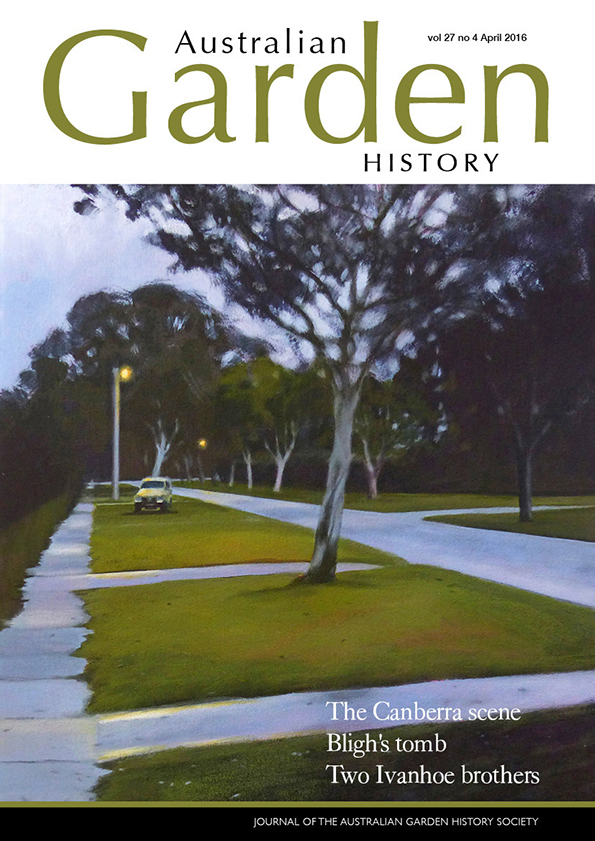Contents
Produce from history’s backyard Lenore Coltheart
Investigating food gardening in Australia since 1788 means peering into the backyard of history. Despite this, food gardens are a very rich source in digging up the past. They reveal everyday details of who actually ‘mixed their labour with the soil’ and of the food grown and eaten. This article focuses on two rural properties on the southern tablelands of New South Wales. Like all the older pastoral holdings in most parts of Australia, Lanyon and Tuggeranong have a direct debt to convict labour, established under the assignment system integral to pastoral occupation.
Growing a garden city from scratch Greg Wood
Many design and topographical considerations influenced the selection of a site for Australia’s capital and the nature of the resulting city. The process involved Royal Commissions, extensive survey works and an international competition.
Lindsay Pryor: planting the capital Matthew Higgins
If you travel to the top of Mt Ainslie, you get a superb view over Canberra. You can see the lake, many of the big national institutions, the mountains in the distance. But there seems to be something missing. Where are all the houses and smaller buildings? Well, they’re there, but they are behind all the greenery. That is one of the wonders of Canberra, and one of the people who shaped this green miracle of the bush capital was Lindsay Pryor.
John Gray – a life in trees and parks Max Bourke
Dr John Gray OAM has been a significant force in the design and implementation of park and garden design in Canberra. He is a quiet man with a great sense of history and respect for the environment.
Captain Bligh’s tomb Christopher Woodward
The vestry of the old church of St Mary’s at Lambeth in London, built beside the Thames in 1054, rebuilt by the Victorians, and in the 1970s rescued from demolition to become the world’s first museum dedicated to garden history is the site of the tombs of three plant-hunters: John Tradescant and his son, and Captain Bligh of the Bounty.
Two brothers and their gardens Tim Gatehouse
In Waterdale Road in the Melbourne suburb of Ivanhoe, a Moreton Bay fig tree, a small grove of peppercorns, and the bole of an ancient red gum stand wedged between the footpath and the car park of the Ivanhoe Aquatic Centre. They are the remnants of two luxuriant gardens established in the 1850s by Scottish settler brothers John Donaldson (1827-1905) and his brother James (1832-1916).
The Bishopscourt Corroboree Tree Sandra Pullman
The official residence of the first Bishop of Melbourne, Bishopscourt, was built in 1853. In its grounds was a magnificent river red gum, which featured in an article by Wendy Dwyer in Australian Garden History (v.13 no.4, 2002). Since the publication of the article the original tree has been removed, and a seedling from the same area has now replaced it.
Profile: John Maurer
A profile of John Maurer, AGHS’s public officer on the national management committee.
West Australian Urban Forest Masterclass Caroline Grant
On 2 December 2015 the West Australian Urban Forest Masterclass was held in Maylands, Perth. The aim was to advance green space at local council level. Presenters shared practical knowledge and experience, and the day finished with a team-based ‘pitch to pollies’ workshop where four serving councillors judged hypothetical urban greening projects.


